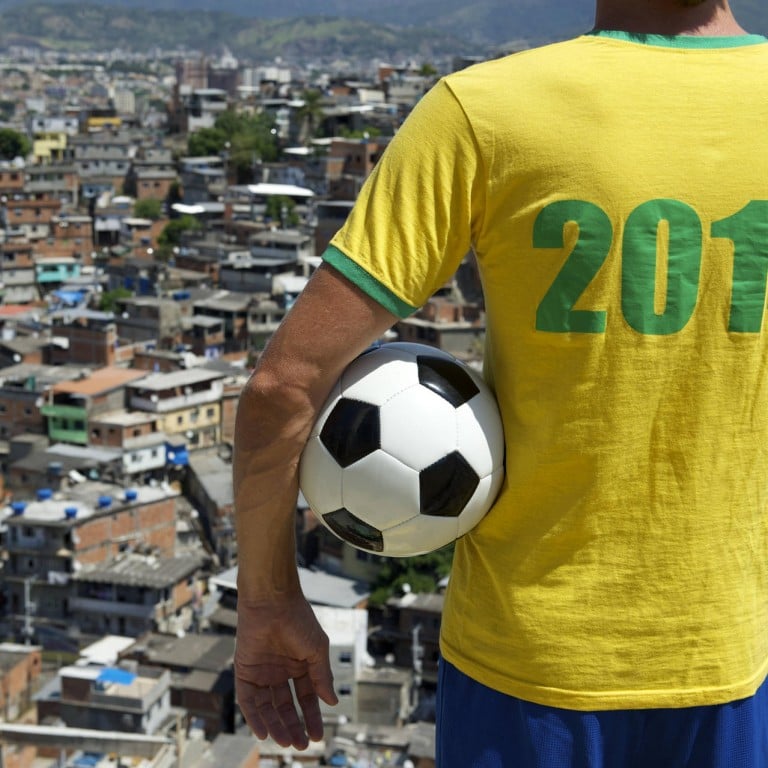
The two Brazils
As the World Cup soccer tournament kicks off, the host nation's talented team and lack of modern infrastructure will come under the spotlight
The month-long 2014 World Cup soccer tournament will be a tale of two very different Brazils.
One is a star-studded and immensely talented soccer team and its , or "beautiful game", a term coined by Pele, the country's veteran footballer.
Yet economists are much less confident about the second Brazil. This is the one of stagflation, double-digit interest rates, fiscal populism and worryingly low levels of productivity and investment.
It is also the Brazil of rising social discontent, shoddy public services and a woeful lack of modern infrastructure.
Sepp Blatter, the head of the international football body Fifa, said Brazil's World Cup preparations were the worst he had ever seen.
The contrast between 2007, when Brazil was awarded the rights to stage the World Cup, and now is plain for all to see.
Growth has shrivelled from 6 per cent to 2.2 per cent last year. On Monday, economists revised down their forecasts for growth this year to a 1.4 per cent.
In the first quarter of this year, Brazil's economy practically ground to a halt, with investment contracting 2.1 per cent quarter on quarter and consumer spending - the main driver of growth in recent years - dropping 0.1 per cent.
To make matters worse, Brazil has a sticky inflation problem. Even after raising its benchmark interest rate 3.75 percentage points since April last year to 11 per cent - the world's longest monetary tightening cycle since the start of the sell-off in emerging markets in May last year - the country's central bank is still battling an inflation rate that rose to 6.4 per cent last month, significantly above its 4.5 per cent target.
Last month, the central bank left its main rate unchanged in the hope that its year-long tightening cycle will be enough to contain inflation. But the prevailing view is that consumer price inflation will still be above 6 per cent by the end of this year, triggering more growth-sapping rate increases next year.
Yet at least the central bank is doing its bit to help rebalance the economy away from the consumption-led development model favoured by the ruling Workers' Party, headed by President Dilma Rousseff, the protégé of the popular former head of state, Luiz Inacio Lula da Silva.
One of Lula's biggest achievements was to drag millions of Brazilians out of poverty through Bolsa Familia, a conditional cash-transfer programme offering a monthly stipend to low-income families in return for enrolling their children in school.
The second Brazil ... is one of stagflation ... and worryingly low levels of productivity
The scheme helped create a lower middle class that is now demanding better-quality public services and an end to corruption.
A year ago, more than a million Brazilians took to the streets to call for political accountability and better governance.
The problem is that Rousseff's party has little else to offer them other than "Lulismo", the socially oriented policies that appeal to poorer Brazilians and have kept the party in power for the past 12 years.
While the government's approval rating has fallen to 35 per cent, Rousseff - who hopes to win a second term in office in a closely watched presidential election on October 5 - has long painted her main opponents as "neo-liberals" who, if in power, would scale back Bolsa Familia.
While such tactics may help her win the election, Brazil could do with a burst of economic liberalism now.
In its latest assessment of Brazil's economy, the International Monetary Fund says "decisive and comprehensive efforts are needed to enhance productivity and competitiveness, increase investment and mobilise domestic savings".
In order to boost investment without widening the current account deficit - which stands at 3.5 per cent of gross domestic product and was a source of concern for markets last year - the next government will have to raise domestic savings.
This means reforming public finances, the Achilles' heel of Brazil's economy.
The IMF notes a troubling erosion in the credibility of Brazil's fiscal framework since the 2008 financial crisis - partly because of subsidised lending to public banks, which has led to a deterioration in fiscal fundamentals.
In April, Ashmore, a major international financial investor in Brazil, went so far as to accuse Rousseff's government of "undoing most of the gains in [fiscal] credibility" achieved under Lula.
In stark contrast to India, where equity markets rallied in anticipation of Narendra Modi's victory in last month's parliamentary election, Brazilian stocks are benefiting from the fall in Rousseff's popularity.
Yet if, as seems likely, Brazil wins the World Cup, Rousseff could get a boost in the polls and win a second term.
Still, irrespective of who wins October's election, the challenges facing Brazil's new government will be anything but .


